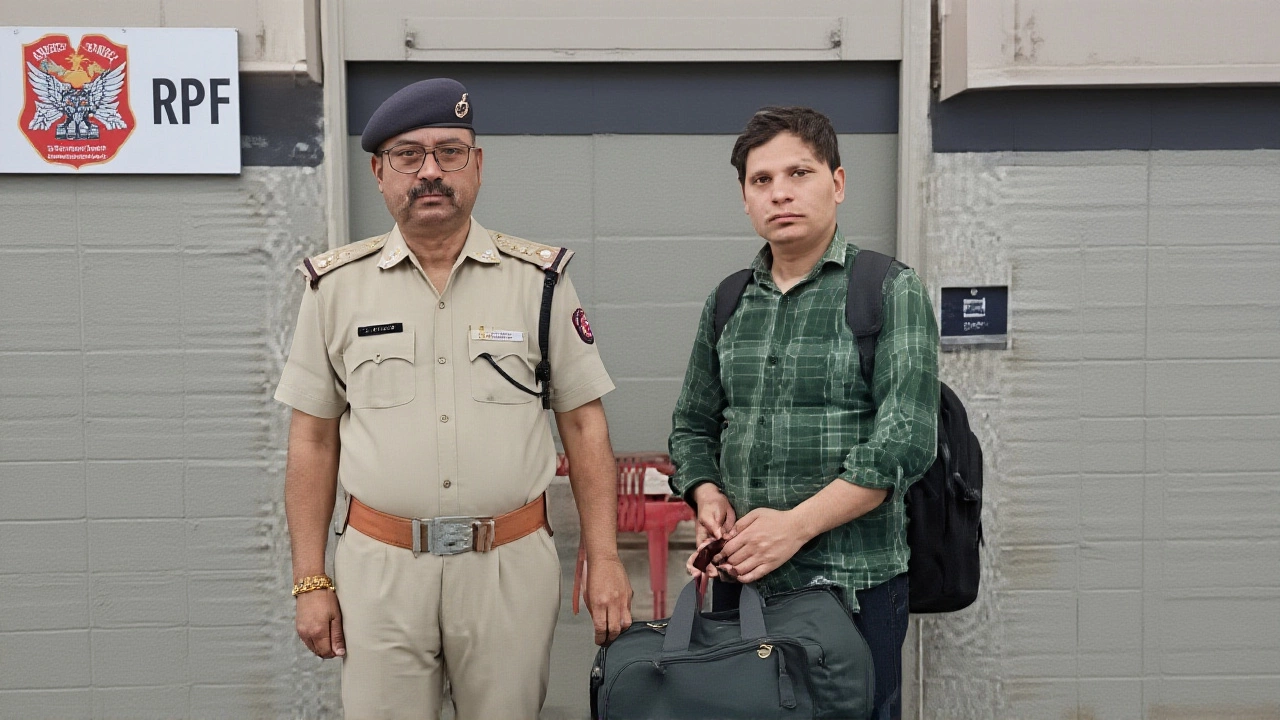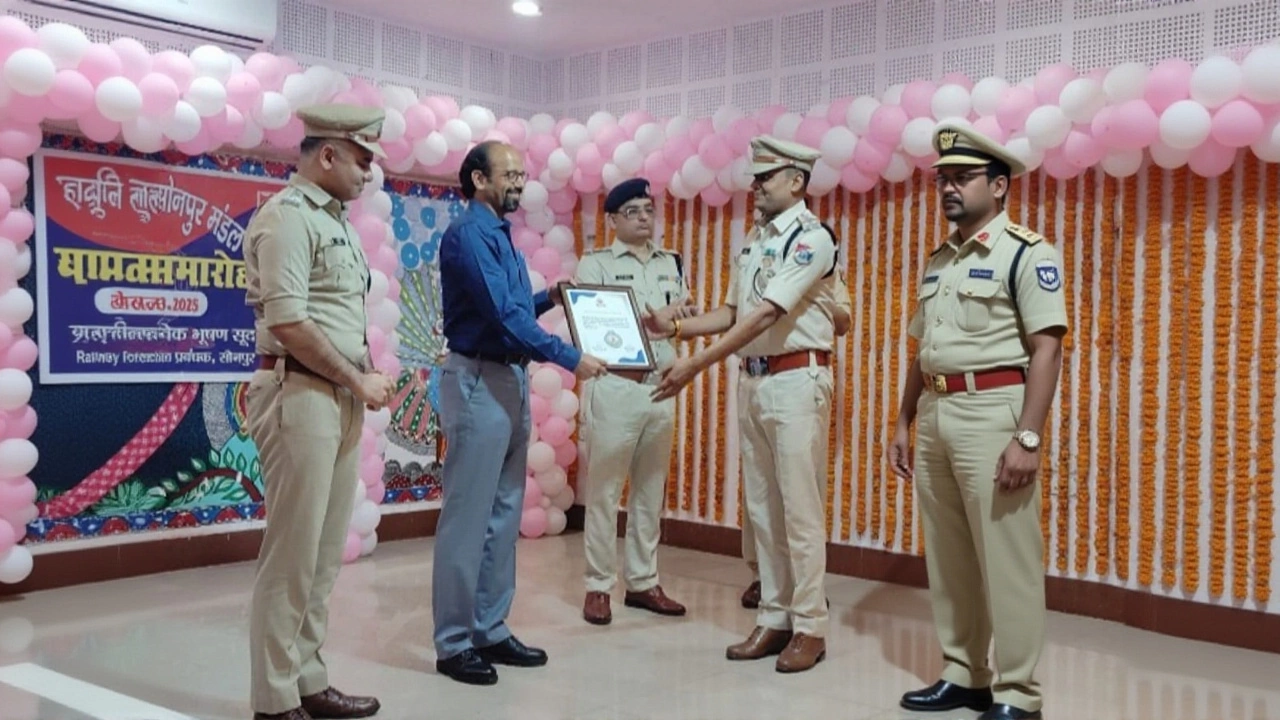When Inspector Manish Kumar headed a team of the Railway Protection Force (RPF) at Muzaffarpur Junction, they pulled 144 children out of the clutches of human trafficking networks and reunited 302 missing youngsters with their families. The operation, carried out over the twelve‑month period ending in March 2024, also saw 43 traffickers booked, 50 train‑theft suspects arrested, and 327 passengers fined for pulling emergency chains that stalled services across the Sonpur Railway Division.
Background and Scale of Trafficking on Indian Railways
The railways have long been a magnet for illegal recruiters, because trains criss‑cross the country like veins, delivering victims from remote villages to bustling metros. Since 2020, the East Central Railway (ECR) has logged more than 1,100 rescues, according to Inspector General Amaresh Kumar. That figure includes 347 traffickers handed over to judicial custody, a number that reflects a coordinated push rather than isolated crack‑downs.
“We map vulnerable routes, monitor CCTV feeds, and work hand‑in‑hand with NGOs,” Kumar told The Times of India on 25 June 2024. The RPF’s intelligence‑driven formula hinges on three pillars: data‑rich hotspot mapping, rapid response teams, and community outreach through partners like Bachpan Bachao Andolan (BBA), the child‑rights NGO founded by Nobel laureate Kailash Satyarthi.
Muzaffarpur RPF’s 2024 Achievements
The Muzaffarpur post’s annual report, released by the local press in early 2024, highlighted three headline numbers: 144 child rescues, 43 trafficker arrests, and 302 reunifications. The success earned the unit two Efficiency Shield Awards, presented by Divisional Railway Manager Vivek Bhushan Sood during a ceremony at the station on 12 March 2024. The awards, marked as an Efficiency Shield Awards ceremonyMuzaffarpur Junction, recognized both operational efficiency and community impact.
Sub‑Inspector Gokulesh Pathak earned a special commendation for busting a ticket‑fraud ring that had siphoned off roughly ₹2.3 million from unsuspecting travelers. Meanwhile, Dr. Shaligram Chaudhary, the Divisional Medical Officer, was lauded with the Best Health Unit Shield Award for setting up a temporary child‑care ward inside the station’s primary health centre.
Key Operations and Partnerships
The 2024 data are more than just numbers; they point to a pattern of collaborative raids. On 13 May 2025, RPF officers at Raxaul Railway Station—an important border hub near Nepal—joined forces with the Government Railway Police, the Sashastra Seema Bal’s Anti‑Human‑Trafficking Unit, and the NGO Prayas Juvenile Aid Centre. The joint sweep rescued four teenage girls who had been misled with promises of work in Delhi. One trafficker was apprehended on the spot, and the case was lodged under the Bharatiya Nyaya Sanhita, the Juvenile Justice Act, and the Child Labour (Prohibition & Regulation) Act, 1986.
Earlier, on 24 April 2024, RPF teams from Kanpur Central in Uttar Pradesh liberated 14 minors from a similar ring, a rescue recorded on the Ministry of Home Affairs portal. These operations underscore a growing playbook: gather intel, synchronize with local law‑enforcement and NGOs, and execute swift interdictions.

Legal Follow‑up and Health Support
Legal proceedings against the 43 traffickers tied to the Muzaffarpur case are now coursing through the Muzaffarpur District Court, with hearings slated through the third quarter of 2025. The victims are placed under the care of the Bihar State Child Protection Society, which runs rehabilitation centers in Patna, Muzaffarpur, and Sitamarhi. Here, children receive counseling, education, and vocational training, aiming to break the cycle of exploitation.
On the health front, the Railway Primary Health Centre at the junction has been upgraded with pediatric emergency kits, a move championed by Dr. Chaudhary. The centre now offers 24‑hour trauma care, an essential service given the physical and psychological injuries many rescued children carry.
Future Plans and Emerging Challenges
Looking ahead, IG Amaresh Kumar has set an ambitious target: install upgraded CCTV systems at 37 high‑risk stations across the ECR zone by 31 December 2025. Stations like Barauni, Darbhanga, and Samastipur are next on the list, as they sit on key migration corridors toward Delhi and Punjab.
However, challenges linger. Traffickers are increasingly using digital platforms to lure victims, a trend the RPF is only beginning to address. Moreover, resource constraints—especially in remote stations—mean that constant monitoring is still a work in progress.
What does this mean for everyday commuters? Simply put, a more vigilant railway environment can translate into fewer delays, safer journeys, and a stronger safety net for vulnerable families who rely on trains for livelihood migration.
Frequently Asked Questions
How many children were rescued by the Muzaffarpur RPF in 2024?
The Muzaffarpur unit rescued 144 children from trafficking networks during the twelve‑month period that ended in March 2024, according to the post’s official report.
Which NGOs have partnered with the RPF in these operations?
Key partners include Bachpan Bachao Andolan, which provides intelligence and child‑care expertise, and the Prayas Juvenile Aid Centre, which assisted in the Raxaul rescue and offers rehabilitation services.
What legal statutes are used to prosecute traffickers caught on the railway network?
Offenders are charged under the Bharatiya Nyaya Sanhita, the Juvenile Justice (Care and Protection of Children) Act, and the Child and Adolescent Labour (Prohibition and Regulation) Act 1986, ensuring both criminal and child‑protection provisions are applied.
What steps is the RPF taking to prevent future trafficking incidents?
The force is expanding CCTV coverage to 37 high‑risk stations, training staff to spot suspicious behavior, and leveraging intelligence from NGOs and digital monitoring units to intercept recruitment before it reaches the rails.
How does the rescue effort impact everyday railway passengers?
A safer rail network means fewer delays caused by criminal activity, a reduced risk of passengers being drawn into illegal schemes, and overall improved confidence in using trains for long‑distance travel across Bihar and beyond.



